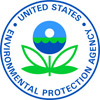EPA Settles Alleged Lead-Based Paint Violations with St. Louis Renovation Companies

LENEXA, KAN. (SEPT. 10, 2025) – Today, U.S. Environmental Protection Agency (EPA) announced a settlement with Orlando Askins, Askins Development Group LLC, and Shaw Holding Group LLC to resolve alleged violations of the federal Toxic Substances Control Act.
According to EPA, since at least 2015, Askins and his associated companies renovated dozens of residential properties in urban St. Louis and allegedly failed to comply with regulations intended to reduce the hazards of lead-based paint exposure.
“Lead is a toxic contaminant that is particularly harmful to children, and renovation companies that violate lead-based paint regulations must comply with federal law,” said EPA Region 7 Administrator Jim Macy. “This settlement finally resolves years of alleged noncompliance and demonstrates the federal government’s commitment to hold uncooperative renovators accountable.”
Last year, after Askins and his associated companies refused access to EPA inspectors at numerous work sites, the United States filed a complaint and sought a preliminary injunction in federal court, seeking to enjoin defendants from performing ongoing renovation work.
The United States alleged that Askins and his associated companies failed to obtain EPA renovation firm certification; failed to assign a certified renovator prior to performing renovations; and violated multiple, lead-safe work practice requirements that could result in exposure to hazardous lead dust and debris.
During settlement negotiations, defendants agreed to cease renovation work until or unless they could demonstrate compliance with lead-based paint renovation regulations.
Under the terms of the current settlement memorialized in a proposed Consent Decree, defendants agreed to take the following actions:
- Obtain EPA renovation firm certification.
- Hire certified renovators and follow lead-safe work practices at all future renovation sites.
- Designate a “compliance officer” to oversee ongoing renovation work and act as a liaison to EPA to notify the agency prior to initiating renovation work.
- Test for lead dust after completing renovations and perform additional cleaning if lead is detected.
- Allow EPA inspections.
- Demonstrate compliance with all recordkeeping requirements required under the regulations.
- Submit reports to EPA demonstrating compliance with the Consent Decree.
The proposed Consent Decree is subject a 30-day public notice and comment period. It can be viewed at the U.S. Department of Justice page, which is also where the public can submit comments.
Background
One of the most common causes of elevated blood lead levels in children is lead-contaminated dust from lead-based paint that is disturbed by renovations, or from chipped or peeling paint in homes built prior to 1978. Infants and children are especially vulnerable to lead-based paint exposure, because their growing bodies absorb more lead than adults do and their brains and nervous systems are more sensitive to the damaging effects of lead. Children exposed to lead may experience irreversible and lifelong health effects. Reducing childhood lead exposure and the associated health impacts is a top priority for EPA.
To learn more about lead, visit EPA’s:
To learn more about EPA’s lead-based paint rules, visit:
- Lead Renovation, Repair, and Painting Program
- Lead-Based Paint Disclosure Rule
- Enforcement Alert: EPA Enforces Lead Renovation, Repair, and Paint Regulations Against Violators
To learn more about lead-safe renovations or report a violation, visit:
- Find a lead-safe certified firm
- Apply for lead-safe certification
- Report a lead-based paint violation in Region 7
# # #
Learn more about EPA Region 7
View all Region 7 news releases
Visit the Region 7 Media page
Connect with EPA Region 7 on Facebook and Instagram
Follow us on X: @EPARegion7
